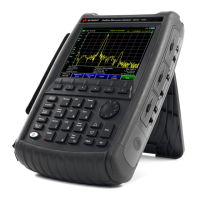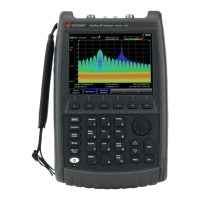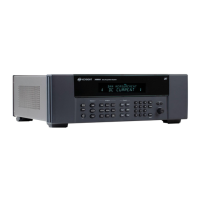82 Keysight N9927-90001 User’s Guide
TDR (Time Domain Reflectometry) - Option 215
TDR Measurement Settings
Start Frequency – Start frequency that is used to calculate TDR.
Stop Frequency – Stop frequency that is used to calculate TDR.
Range Resolution. Indicates the accuracy of the distance to fault
measurement. For example, with range resolution of 500 mm, if the distance to
fault is 10 meters, this value could be inaccurate by +/- 500 mm or between
9.5 to 10.5 meters. This value is calculated from frequency span / resolution
(points).
Response Resolution, not displayed, indicates the distance that could be
between two faults and still show as separate faults. Learn more in Window
Settings in “Window Settings” on page 80.
Maximum Distance. The distance that could be viewed with the current
settings. Defined by: Vf*c*Points/(2*Bandwidth) where:
— Vf = velocity factor
— c = speed of light
— Points = resolution
— Bandwidth = frequency range
Alias-free Range (On/Off)
—On = No Alias images
— Off = Alias images may appear in the response.
About Alias Faults
An alias fault is not a true device response. An alias fault appears because of
the method used to convert frequency to time.
On the TDR Settings page (above) the c - Alias-free Range = Off setting
indicates alias images MAY appear on the screen.
Shorter stop distances (less than 10 meters) and a higher resolution (1001
points) will be more likely to result in Alias-free Range = Off.
When the Alias-free Range = Off, the following procedure will help to
determine if a response is true or an alias response:
1. Put a marker on the response in question and note the distance to the
fault.
2. Change the start or stop distance.
A true fault response will not move in distance. That is, if a true fault is present
at 10.3 meters, changing the stop distance from 15 m to 20 m will not move
the fault; the fault will remain at 10.3 meters. However, an alias response will
appear to move.
